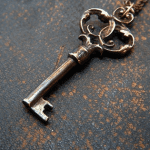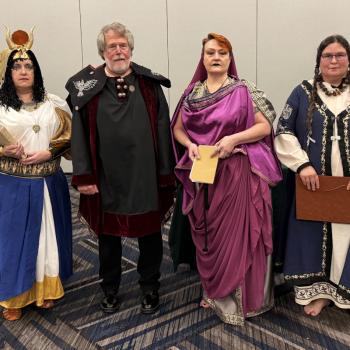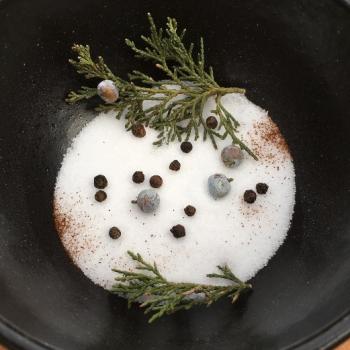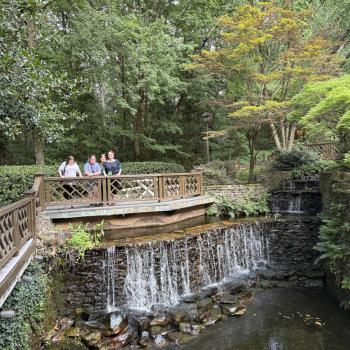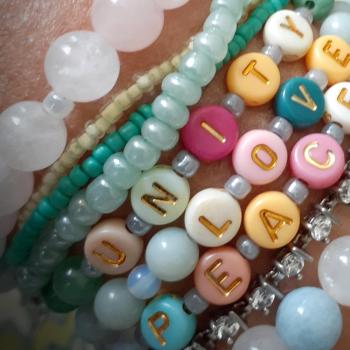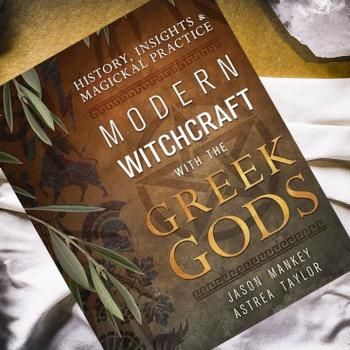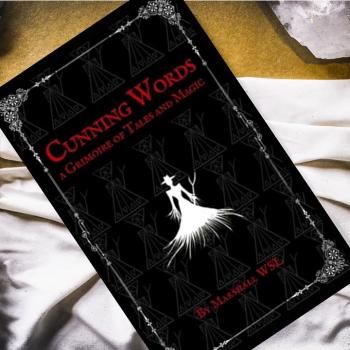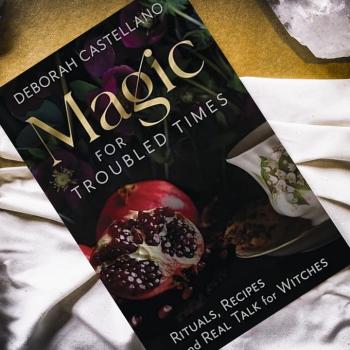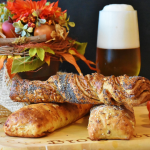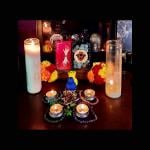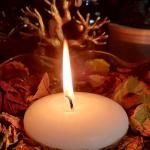I have an Easter dress.
This is the first time since high school I’ve chosen one.

I’ve visited Christian churches for special occasions. But I’m a visitor only. I get restless as a toddler sitting through the long sermons on uncomfortable pews. The hymns don’t speak to me any more than does the idea that I need a sacrificial deity to save me from eternal damnation Thanks for the invitation to come again, but really, I just need to dance in the woods.
So why the Easter dress? Why, after years of brunch-only celebrations with my own family, am I actually going to attend services?
Love.
Despite my best-laid plans, I have fallen hard for a Christian. True, he’s an open-minded Eastern Orthodox software engineer with mystical leanings and a strong environmentalist streak. But he’s still a Christian. I’d pictured a Heathen, a Buddhist, a Hindu, maybe a Quaker or Unitarian. Even an agnostic environmentalist, a white-light New Ager—but not a Christian to fall in love with. It took a mutual friend of ours almost three years to get me to agree to even meet this man. And one of the reasons was his religion.
I now have to shake my head at my own narrow-mindedness. And my hypocrisy as well. I spent years blogging with a local interfaith site. I went to several interfaith panel discussions as the token Pagan. Most audience members and panelists were polite and interested. I was willing to go to the events, and to the discussions afterwards over coffee or beer. But I can’t say I ever made a close friend at one of those events. Once I identified as Pagan, my social circle became almost exclusively Pagan. I even lost touch with old friends I deemed insufficiently “open.” I was willing to take interfaith only so far. As Teo Bishop wrote in The Wild Hunt, I was comfortable in the Pagan Bubble.
I suspect it’s the same with many of us. I understand why. We move every day through landscapes of varying safety for the openly Pagan. We need to be around people who won’t think we’re odd if we say we were late for work because the faeries stole our keys, or if we say Hermes spoke to us in a dream last night. We need to talk about our spirituality with people who won’t tell us we’re damned, or crazy, or damned crazy for believing as we do.
And in an intimate relationship? To not be able to share my spirituality, the core of my self-definition, with a life partner? I just assumed there would be too many limits on a non-Pagan’s understanding. I now realize I’d allowed my own lingering, negative feelings about Christianity to color my views on relationship possibilities. And my memories of the scorn that my rational, atheist boyfriend had tossed on my blossoming Pagan beliefs and budding psychic abilities. No, I could do without that, I said. No Abrahamic monotheists, no atheists. Pagans or fellow travelers only.
But as I grew in my own spirituality, I examined those feelings. I began to make peace with those parts of myself that had been wounded by an intolerant fundamentalist church. I realized that if I truly believed that all paths lead to the Source, that I couldn’t act as though that meant “all paths except the one with a cross on it.” I gradually opened the door to friends I’d lost touch with, and found them to be understanding of, and curious about, my new path. And discovered that despite labels like “Catholic” or “Lutheran” or “Episcopalian,” many of their personal beliefs and practices were very similar to mine. And at last, I was willing to take a chance on a romantic relationship with someone who might, in spite of the Christian label, be right for me.
Leaving The Bubble has not been easy. It has taken time for me to open up about my belief system with my Shy Engineer. It started with reading and discussing American Gods together, and my letting him know that the Pagan Gods were the ones that walked beside me. He wasn’t as interested in the details as I would have liked, but he didn’t flee in horror or try to convert me. Instead, he stated that everyone’s beliefs deserve respect and fair treatment. And continued a very perceptive analysis of the book.
Since then, I’ve gradually shared more about my beliefs. I’ve discovered his exposure to science fiction, fantasy literature and comic book culture have been excellent preparation for understanding Pagan practices. When I started to explain Samhain, for example, he immediately got it—because, he informed me, Neil Gaiman wrote a Babylon 5 episode (Day of the Dead) that featured a culture celebrating a holiday in which the dead returned with messages for the living. We watched it together. It was indeed Space Samhain.
By Ostara, I was comfortable enough to discuss the small ritual I’d attended. I told him about the eggs representing new possibilities each of us wanted to bring into our lives, as well as the conversation my circle had about spring cleaning and rededicating home altars. That led to a long discussion about religious icons, images and dedicated worship areas in the home—or the lack thereof. And a comment from him that he appreciates that I try to align my everyday decisions with my religious ethics.
That’s the best kind of interfaith work; just being who we are, and letting our actions speak for our principles. As Thorn Coyle wrote in her post honoring Yana, the Syrian Pagan killed for her beliefs, “We don’t know the effect our actions will have on the world. With every honest encounter we risk having, we set some wheels in motion, we loosen a knot, or turn on a light. Someday, these actions just might save a life. We each have a choice to do interfaith work. Every single day.”
Like many American Pagans, I’m the only one in my immediate family of origin, as well as the only one in the family I may someday join. Holidays can be complicated for me emotionally, as they come with not only the family baggage we all must carry, but also the baggage of a religion that no longer speaks to my needs. I honor the overlapping religious and cultural messages as I can, and show up for the family gatherings. That’s the part that’s most important to me, and fortunately, to them.
As Jen McConnel said in her post about her marriage to a Christian man, we find common ground with our sweeties and our families. And need to trust that there can be more acceptance available for us than we may expect. I know that for me, one small step led to another, and then another. I don’t expect my Shy Engineer to fully embrace my worldview and spiritual path, although that would be nice. I just want acceptance, and understanding, and support.
Which also means that I accept and support his faith, down to buying an Easter dress to wear to the Methodist church we’ll attend with his sister’s family in Central Illinois. My religion geek self would be happier if it were an Eastern Orthodox service, as I’ve never seen one of those. Maybe in May, when it’s Orthodox Easter.
After all, I have the dress now.
Gateway Goddess is published on alternate Fridays. Follow it via RSS or e-mail!




